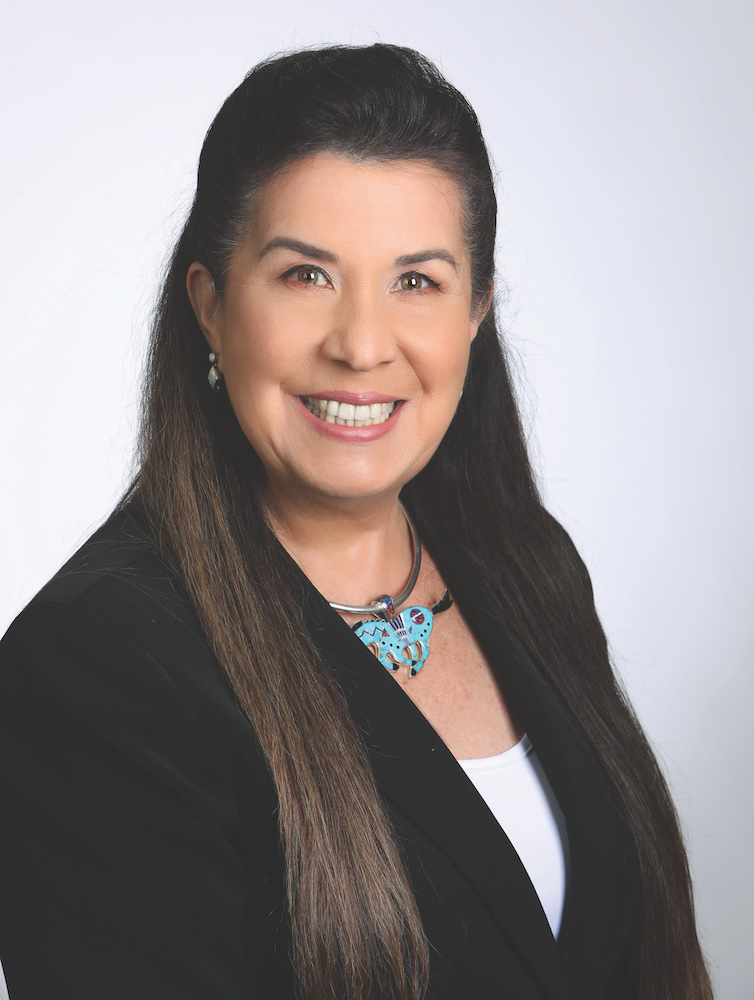On a Mission to Change the Energy of Money

While a UCLA undergrad, Valerie Red-Horse Mohl dreamed of being a filmmaker.
But Red-Horse Mohl needed a day job, and wound up at an interview with Drexel Burnham Lambert, the firm that changed U.S. markets through the high-yield bond. “I think I learned more from that experience than I would’ve if I had gone anywhere for an MBA,” the CFO of the East Bay Community Foundation (EBCF) says.
With her “College-of-Life” business degree in hand, Red-Horse Mohl went on to found the first investment bank focused on Indigenous Tribal Nations where she structured and managed over $3 billion in capital, led Social Venture Circle, which helps move investors to impact, and even made a few films along the way.
In her current role, Red-Horse Mohl is on a mission to change how capital flows, starting with the $1 trillion locked up in charitable foundation endowments. For her, a double bottom line won’t do. She is looking for a quadfecta, where returns for EBCF’s $1 billion endowment meet racial equity, closing the wealth gap and stemming environmental degradation.
Q. Why has it taken charitable foundations so long to move into impact investing?
A. Well, you’re asking me a question that is my life’s work and passion.
My passion came because I had the same realization, Daniel, that money and closing the wealth gap will address most of the issues we’re trying to solve, whether it’s affordable housing or poverty or hunger.
The problem is the money [foundations] invest in the market.
Foundations typically hire external consultants, all the big names – Goldman Sachs or Morgan Stanley, or one of the big banks – to manage the assets, and those managers have an autopilot menu of investing to keep their fees low.
No criticism, but if they were to do something a little more active, they would have to charge more. So, when I came into East Bay Community Foundation with my knowledge and my licenses, I said, I’m going to create that portfolio working with our external consultants, because I actually know the asset classes. I know how to move capital with that racial equity priority.
My hope is we can make a difference by sharing that as a model portfolio, and be able to say, here’s what we’ve done.
Q. Why have foundations and other institutional investors been so slow to deploy capital to Black, Brown, and female fund managers?
A. In moving to 100% mission alignment, we are focused on 100% racial equity investing. So that means all diverse asset managers.
And we’ve often heard people say, “we don’t know who they are. There’s not enough.” We have dispelled that myth.
Q. How does this work relate to your Cherokee ancestry? How important is the redeployment of private capital in making amends for the U.S.’s unforgiving treatment of First Nations and Black people?
A. I feel very much in alignment with the Black community. If you think about this country, it was built on land that was taken from my people, my ancestors, and then developed by African slaves who were forcibly brought here. That’s a big debt in my opinion.
But I think the way to make reparations is to allow us to thrive and catch up in the wealth gap that I’ve been talking about. For me, it’s not so much looking back, even though that’s important. It’s looking forward and how do we really narrow, if not eliminate, the wealth gap, and what happens when money comes into Black and Brown funds from Wall Street?
Many of those funds are not based in New York and Boston. It starts to then flow into companies that are all over America in communities of color. And then we raise the level of wealth in those communities and then the need for all the philanthropic support starts to lessen. There will always be a need for philanthropy, but it’s not going to answer the problem that we’re talking about.
